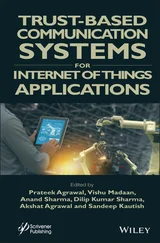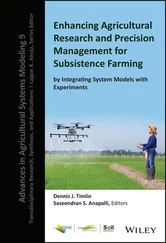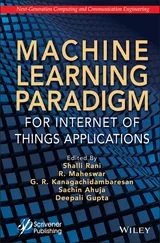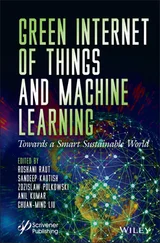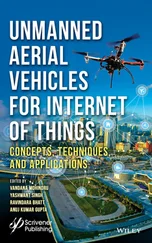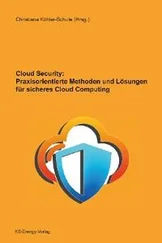1 Cover
2 Title Page
3 Copyright
4 Preface
5 Acknowledgement
6 1 Internet of Things: A Key to Unfasten Mundane Repetitive Tasks 1.1 Introduction 1.2 The IoT Scenario 1.3 The IoT Domains 1.4 Green Computing (GC) in IoT Framework 1.5 Semantic IoT (SIoT) 1.6 Conclusions
7 2 Measures for Improving IoT Security 2.1 Introduction 2.2 Perceiving IoT Security 2.3 The IoT Safety Term 2.4 Objectives 2.5 Research Methodology 2.6 Security Challenges 2.7 Securing IoT 2.8 Monitoring of Firewalls and Good Management 2.9 Conclusion
8 3 An Efficient Fog-Based Model for Secured Data Communication 3.1 Introduction 3.2 Attacks in IoT 3.3 Literature Survey 3.4 Proposed Model for Attack Identification Using Fog Computing 3.5 Performance Analysis 3.6 Conclusion
9 4 An Expert System to Implement Symptom Analysis in Healthcare 4.1 Introduction 4.2 Related Work 4.3 Proposed Model Description and Flow Chart 4.4 UML Analysis of Expert Model 4.5 Ontology Model of Expert Systems 4.6 Conclusion and Future Scope
10 5 Traffic Prediction Using Machine Learning and IoT 5.1 Introduction 5.2 Related Work 5.3 System Design 5.4 Results and Discussion 5.5 Conclusion 5.6 Future Work
11 6 IoT Protocol for Inferno Calamity in Public Transport 6.1 Introduction 6.2 Literature Survey 6.3 Methodology 6.4 Implementation 6.5 Results 6.6 Conclusion and Future Work
12 7 Traffic Prediction Using Machine Learning and IoT 7.1 Introduction 7.2 Literature Review 7.3 Methodology 7.4 Architecture 7.5 Results 7.6 Conclusion and Future Scope
13 8 Application of Machine Learning in Precision Agriculture 8.1 Introduction 8.2 Machine Learning 8.3 Agriculture 8.4 ML Techniques Used in Agriculture 8.5 Conclusion
14 9 An IoT-Based Multi Access Control and Surveillance for Home Security 9.1 Introduction 9.2 Related Work 9.3 Hardware Description 9.4 Software Design 9.5 Conclusion
15 10 Application of IoT in Industry 4.0 for Predictive Analytics 10.1 Introduction 10.2 Past Literary Works 10.3 Methodology and Results 10.4 Conclusion
16 11 IoT and Its Role in Performance Enhancement in Business Organizations 11.1 Introduction 11.2 Technology and Productivity 11.3 Technology and Future of Human Work 11.4 Technology and Employment 11.5 Conclusion
17 12 An Analysis of Cloud Computing Based on Internet of Things 12.1 Introduction 12.2 Challenges in IoT 12.3 Technologies Used in IoT 12.4 Cloud Computing 12.5 Cloud Computing Characteristics 12.6 Applications of Cloud Computing 12.7 Cloud IoT 12.8 Necessity for Fusing IoT and Cloud Computing 12.9 Cloud-Based IoT Architecture 12.10 Applications of Cloud-Based IoT 12.11 Conclusion
18 13 Importance of Fog Computing in Emerging Technologies-IoT 13.1 Introduction 13.2 IoT Core 13.3 Need of Fog Computing
19 14 Convergence of Big Data and Cloud Computing Environment 14.1 Introduction 14.2 Big Data: Historical View 14.3 Big Data Challenges 14.4 The Architecture 14.5 Cloud Computing: History in a Nutshell 14.6 Insight of Big Data and Cloud Computing 14.7 Cloud Framework 14.8 Conclusions 14.9 Future Perspective
20 15 Data Analytics Framework Based on Cloud Environment 15.1 Introduction 15.2 Focus Areas of the Chapter 15.3 Cloud Computing 15.4 Data Analytics 15.5 Real-Time Data Analytics Support in Cloud 15.6 Framework for Data Analytics in Cloud 15.7 Data Analytics Work-Flow 15.8 Cloud-Based Data Analytics Tools 15.9 Experiment Results 15.10 Conclusion
21 16 Neural Networks for Big Data Analytics 16.1 Introduction 16.2 Neural Networks—An Overview 16.3 Why Study Neural Networks? 16.4 Working of Artificial Neural Networks 16.5 Innovations in Neural Networks 16.6 Applications of Deep Learning Neural Networks 16.7 Practical Application of Neural Networks Using Computer Codes 16.8 Opportunities and Challenges of Using Neural Networks 16.9 Conclusion
22 17 Meta-Heuristic Algorithms for Best IoT Cloud Service Platform Selection 17.1 Introduction 17.2 Selection of a Cloud Provider in Federated Cloud 17.3 Algorithmic Solution 17.4 Analyzing the Algorithms 17.5 Conclusion
23 18 Legal Entanglements of Cloud Computing In India 18.1 Cloud Computing Technology 18.2 Cyber Security in Cloud Computing 18.3 Security Threats in Cloud Computing 18.4 Cloud Security Probable Solutions 18.5 Cloud Security Standards 18.6 Cyber Security Legal Framework in India 18.7 Privacy in Cloud Computing—Data Protection Standards 18.8 Recognition of Right to Privacy 18.9 Government Surveillance Power vs Privacy of Individuals 18.10 Data Ownership and Intellectual Property Rights 18.11 Cloud Service Provider as an Intermediary 18.12 Challenges in Cloud Computing 18.13 Conclusion
24 19 Securing the Pharma Supply Chain Using Blockchain 19.1 Introduction 19.2 Literature Review 19.3 Methodology 19.4 Results 19.5 Conclusion and Future Scope
25 Index
26 End User License Agreement
1 Chapter 1Figure 1.1 Major areas of IoT platform. Figure 1.2 Policy-based IoT applications. Figure 1.3 Softwarebased IoT applications. Figure 1.4 The benefits of CC. Figure 1.5 The hierarchy of EC. Figure 1.6 The benefits of EC. Figure 1.7 The concept of cloud, edge, and FC.Figure 1.8 The benefits and limitations of the IoTGC.Figure 1.9 The steps of SIoT (SEG 3.0 methodology) [27].Figure 1.11 A generalized architecture of including semantics.Figure 1.10 Intersection of different IoT visions [2].Figure 1.12 Different layers of interoperability.
2 Chapter 2Figure 2.1 Types of data.Figure 2.2 IoT and its components.Figure 2.3 IoT access control.Figure 2.4 Concept of firewall.Figure 2.5 Privacy in IoT.Figure 2.6 Internal and external attacker on IoT Infrastructure.Figure 2.7 Different data sources of IoT.Figure 2.8 Firewall that allows remote user access to a firewall device.Figure 2.9 Where is security in IoT needed.
3 Chapter 3Figure 3.1 Cloud computing vs fog computing.Figure 3.2 Basic fog computing model. Figure 3.3 Communication in IoT devices.Figure 3.4 Attacks in IoT.Figure 3.5 Fog layered model.Figure 3.6 Time levels for IoT group establishment.Figure 3.7 Computational time levels for data processing.Figure 3.8 Malicious node detection rate.Figure 3.9 Fog computational security levels for data storage.
4 Chapter 4Figure 4.1 Expert model in the healthcare domain for capturing patient symptoms.Figure 4.2 Expert module interaction process.Figure 4.3 Use case diagram of patient and expert module.Figure 4.4 Expert module activity diagram for decision logic.Figure 4.5 Class collaboration diagram.Figure 4.6 Ontological knowledge base diagram.
5 Chapter 5Figure 5.1 Proposed system.Figure 5.2 Flow graph of over all process.Figure 5.3 Hardware in monitoring system.Figure 5.4 Product identification.Figure 5.5 Person identification.Figure 5.6 Comparison process in MATLAB.
6 Chapter 6Figure 6.1 System architecture as shown as functional block diagram.Figure 6.2 MQTT protocol: publish–subscribe model.Figure 6.3 MQTT protocol message exchanges.Figure 6.4 ESP 32 board.Figure 6.5 Flame sensor.Figure 6.6 MQ2 gas sensor.Figure 6.7 DHT11 sensor.Figure 6.8 Actuator valve.Figure 6.9 Initial window of Arduino IDE.Figure 6.10 Sample Arduino IDE toolbar.Figure 6.11 Sample compiling arduino IDE status window.Figure 6.12 Logs file messages on the serial monitor window.Figure 6.13 MQTT broker architecture built on cloud MQTT.Figure 6.14 Interfacing flame sensor with Arduino.Figure 6.15 IoT system data flow for PUBLISH/SUBSCRIBE in MQTT broker.Figure 6.16 Testing of fire detection.Figure 6.17 Flame placed within the range of flame sensor.Figure 6.18 Flame placing outside the range of flame sensor.Figure 6.19 Flame is placed within 60° range of flame sensor.Figure 6.20 Flame is placed outside the 60-degree range of flame sensor.
7 Chapter 7Figure 7.1 Transmodeler.Figure 7.2 API Gateway. Image Source-https://docs.microsoft.com/en-us/azure/arch...Figure 7.3 Application file structure.Figure 7.4 Road transplant simulation board with extra road patch.Figure 7.5 Workflow in application.Figure 7.6 Workflow of Google API in the application.Figure 7.7 Low traffic.Figure 7.8 Moderate traffic.Figure 7.9 High traffic.Figure 7.10 Speed status screen.Figure 7.11 Traffic simulator 1st view.Figure 7.12 Traffic simulator 2nd view.Figure 7.13 Traffic simulator 3rd view.
Читать дальше



